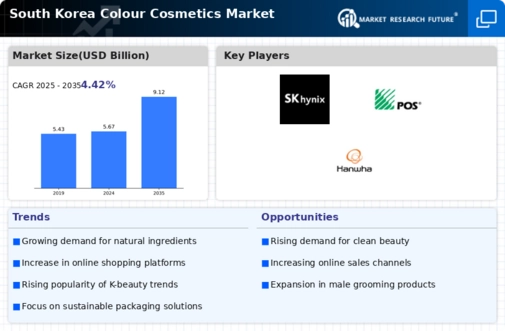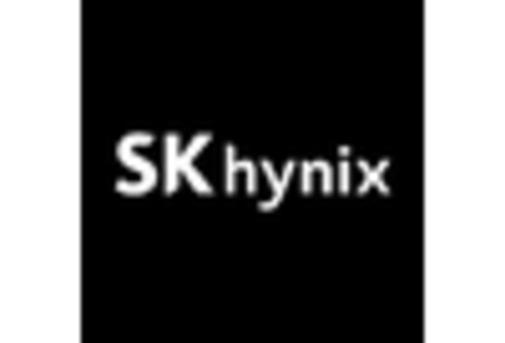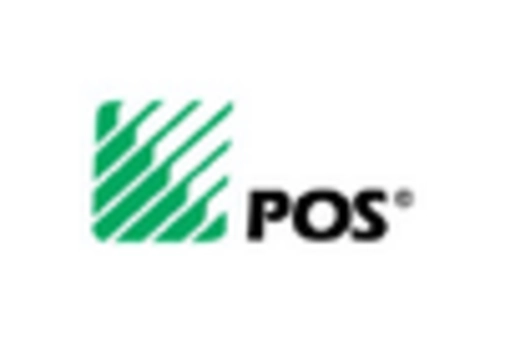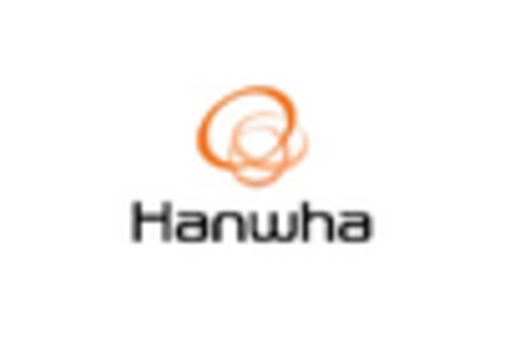Rise of Male Grooming Products
The colour cosmetics market in South Korea is witnessing a significant rise in male grooming products. Traditionally dominated by female consumers, the market is now expanding to include a diverse range of cosmetics tailored for men. This shift is driven by changing societal norms and an increasing acceptance of makeup among men. In 2025, it is estimated that the male segment will contribute to approximately 15% of the overall colour cosmetics market. Brands are launching products such as tinted moisturizers, concealers, and brow gels specifically designed for men, catering to their unique grooming needs. The colour cosmetics market is thus evolving to embrace this demographic, reflecting broader trends in gender inclusivity and self-expression.
Emergence of Online Retail Channels
The colour cosmetics market in South Korea is experiencing a significant transformation with the emergence of online retail channels. E-commerce platforms have become increasingly popular, providing consumers with convenient access to a wide array of products. In 2025, online sales are projected to account for over 40% of total sales in the colour cosmetics market. This shift is driven by the growing preference for online shopping, particularly among younger consumers who value convenience and variety. Brands are investing in their online presence, enhancing user experience through interactive features and personalized recommendations. The colour cosmetics market is thus adapting to this digital shift, ensuring that consumers can easily discover and purchase their desired products from the comfort of their homes.
Sustainability and Eco-Friendly Products
Sustainability emerges as a crucial driver in the colour cosmetics market in South Korea. Consumers are becoming more environmentally conscious, leading to a growing preference for eco-friendly products. Brands are responding by adopting sustainable practices, such as using recyclable packaging and sourcing natural ingredients. In 2025, it is projected that the market for eco-friendly cosmetics will account for approximately 25% of total sales in the colour cosmetics market. This shift towards sustainability not only aligns with consumer values but also enhances brand loyalty. The colour cosmetics market is thus witnessing a transformation as companies strive to meet the demand for products that are both effective and environmentally responsible.
Growing Demand for Innovative Formulations
The colour cosmetics market in South Korea experiences a notable surge in demand for innovative formulations. Consumers increasingly seek products that offer multifunctional benefits, such as skincare properties combined with makeup. This trend is reflected in the rising popularity of hybrid products, which blend cosmetics with skincare ingredients. For instance, the market for BB creams and CC creams has expanded significantly, with sales reaching approximately $500 million in 2025. This growing inclination towards innovative formulations indicates a shift in consumer preferences, as they prioritize products that enhance their beauty while also providing skincare benefits. The colour cosmetics market is thus adapting to these evolving demands by investing in research and development to create unique offerings that cater to the sophisticated tastes of South Korean consumers.
Influence of Social Media and Digital Marketing
The colour cosmetics market in South Korea is profoundly influenced by social media and digital marketing strategies. Platforms such as Instagram, TikTok, and YouTube serve as vital channels for brands to engage with consumers, showcasing new products and trends. Influencer collaborations have become a cornerstone of marketing strategies, with beauty influencers driving significant sales through product endorsements. In 2025, it is estimated that around 70% of consumers in South Korea discover new beauty products through social media. This digital landscape not only enhances brand visibility but also fosters a community of beauty enthusiasts who share tips and reviews. Consequently, the colour cosmetics market is increasingly leveraging these platforms to reach a broader audience and create a more interactive shopping experience.














Leave a Comment